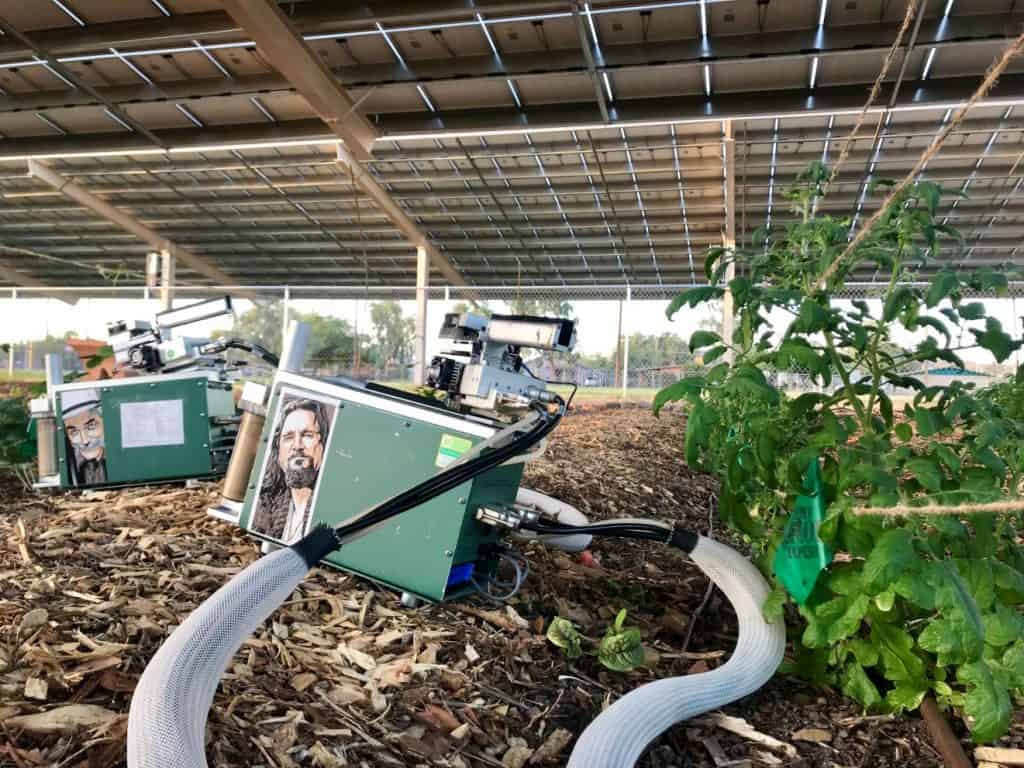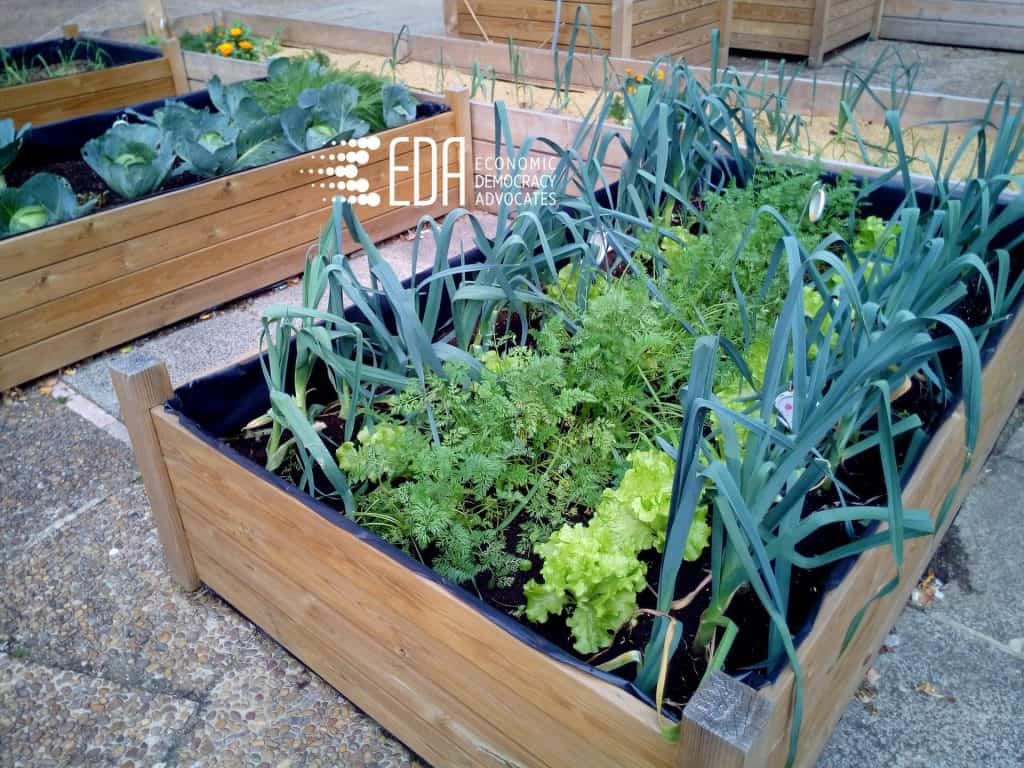Our blog posts have shared ideas that communities can adopt to address providing a healthy resource for food. Even larger communities and cities like Chicago can take a fresh approach to infusing high-quality food locally. We’ve shared many examples of this nature in hopes that some of these would provide inspiration to you to take similar steps in your communities and make a difference.
While some of the ideas we’ve shared are entrepreneurial in nature, requiring a fair amount of investment to launch, the article we’re sharing here is more on micro-economic end of the spectrum. While we all know about growing food in our own backyard gardens and canning or freezing the fruits of our harvest, those of us who live in the Northern tier of the continent, where snow and low temperatures in the winter make outdoor gardening impossible.
This article shares the ingenuity of a couple of MIT students who explored creating a personal source of fresh fruit and vegetables in their dorm room. We urge you to explore the ideas they share, and click through to other articles they’ve shared that take you into alternative approaches to personal farming.
When you get your own indoor farm working, we’d love to hear your stories so we can share them with others. Take the next step and enter the REAL locavore movement.
The opportunity to help people grow fresh food in their homes
It’s been a while since a brand-new appliance made its way into your life and changed the way you lived in your home.
In fact, the last major (and now-ubiquitous) home appliance — the microwave — was first unveiled in the 1954, and debuted at $11,500 (adjusted for inflation).
Today, it’s nearly impossible to find a home without a microwave.
Three years ago in my MIT fraternity room, I saw what I knew could be the next standard household appliance.
Jamie’s prototype looked like a rube goldberg machine, but there it was —
An in-home farming appliance.

My best friend Jamie had built a small farm in our fraternity room. We were growing strawberries, lettuce, beans and tomatoes in cold, snowy January in the middle of Boston.
The benefits of Jamie’s hacked-together aquaponic farm were myriad. It:
- Produced food
- Cleaned air
- Calmed and soothed us
- Set our circadian rhythm (grow lights on a mobile app controlled timer)
- Made us proud to produce something instead of just endlessly consume
- Became a centerpiece of our social lives
- Connected us with nature, in the middle of Boston
- Made us smile while feeding the fish (yes — fish are involved in this method of organic hydroponics called ‘aquaponics’), planting seeds, and harvesting fresh bounty
Turns out, we aren’t the first to garden, or to grow our own food. People have been doing that for a long time. But we are the first to attempt to bring personal farming/gardening into a modern context in the home. We started in 2013, when we quickly produced this rendering:

Our first rendering at Grove for an in-home farming appliance
Now Jamie and I are find ourselves leading a wave of companies who see the opportunity to take what has been a hobbyist outdoor activity and package it in a way that meshes seamlessly with modern living.
There is already proven demand for consumer in-home plant growing systems. Aerogarden, at its peak, did $40M+ in annual sales for it’s small, countertop hydroponic system. Click and Grow sells tens of thousands of it’s small ‘herb garden’ each year. So small, hobby units are selling successfully.
Nobody has cracked the larger, productive in-home farm yet.
But it’s coming.
It’s still early days, but here are a bunch of different solutions and products ‘cropping’ up (FYI — the puns in this ‘field’ are endless):

And here’s why indoor farming is important and an important part of our collective future:

and…

How do we know?

There are two ways to get that food to consumers:
- Grow it somewhere else and distribute it
- Give them tools & knowledge to grow it themselves
There are big opportunities in both categories. Here, we’ll focus exclusively on #2 — consumer farming/gardening. Why?

This post does not discuss small, novelty gardening devices. I analyzed these types of hobby-device companies here (Aerogarden, Click and Grow, Back to the Roots, Ecoqube, SproutsIO, Niwa, Aquasprouts, Fogbow, etc..).
Instead, I’ll focus on larger, technologically advanced, production-focused appliances. I’ll use the term “Farming Appliance” to describe this product category.

Example of an in-home “Farming Appliance”
So, combine the problem — lack of access to fresh, local food — with the 40 million households in the US already gardening, add increasing gardening interest from millennials, and we have an interesting and growing market for consumer in-home farming appliances (& related offerings and services).
At a high level, the pros and cons of approaching demand for trusted fresh and local food with a tech-enabled ‘grow-it-yourself’ product offering are:
Pros: offers freshest and most nutritious produce possible at time of consumption, connects with other consumer value propositions — trust, pride, ownership, passion, gardeners, and finally — removes food distribution costs and complexities entirely.
Cons: hard to produce meaningful quantity in confined spaces, limited economies of scale for plant growth (though, like solar panels, economies of scale in manufacturing components like LEDs, sensor systems, etc..), level of consumer inconvenience in an increasingly outsourced and automated world
At both small and large scales, indoor farming is just reaching efficiencies (LEDs, crop selection), and automation (sensors, IoT, etc…) required for widespread commercial and personal adoption.
To package indoor farming for consumers, several startups are following a similar approach. Here’s the rough offering of many of the consumer indoor farm appliance companies (images conveniently lifted from Grove’s overview slides):


Pretty straightforward, but also very hard to build. Why?
They’re insanely complex products and services that are very hard to replicate. The addition of botany/biology/ecology to a standard IoT consumer product company adds substantial time and complexity to product/experience testing. When done well, this creates a strong defensible competitive moat for any business with years of this testing behind it and imbued in it’s DNA.
Additional Reading: Total Addressable Market (TAM) and Exit Opportunities
The above link explores answers to the questions:
- If a company builds the best ‘consumer indoor farming product’ company possible, how big and valuable would it be?” (Spoiler: I estimate a $16B early adopter market opportunity)
- If a company grows into this space, how can investors make money? What are the exit opportunities?
Additional Reading: Competitive Landscape
To explore the ‘personal indoor farming’ competitive landscape, I analyzed four of the applicable startups in this post.
Bringing people closer to fresh food and to nature in their homes is a massive opportunity. If you share in that belief, or you’re intrigued, let’s be in touch!
Article written by: Gabe Blanchet
Originally published by: Medium.com


